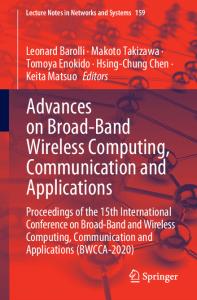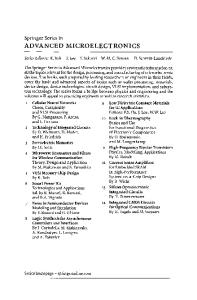Bio-Medical CMOS ICs
Bio-Medical CMOS ICs provides readers with the basic operation principles and architectures as well as the most recent research results of low power CMOS ICs especially for bio-medical applications. The book covers three parts: Vital Signal Sensing and
- PDF / 24,732,850 Bytes
- 526 Pages / 439.37 x 666.142 pts Page_size
- 28 Downloads / 408 Views
Series Editor Anantha P. Chandrakasan Massachusetts Institute of Technology Cambridge, Massachusetts
For further volumes, go to http://www.springer.com/series/7236
Hoi-Jun Yoo · Chris van Hoof Editors
Bio-Medical CMOS ICs
123
Editors Hoi-Jun Yoo Department of Electrical Engineering Korea Advanced Institute of Science and Technology Guseong-dong, Daejeon 305-701 Republic of Korea [email protected]
Chris van Hoof Katholieke Universiteit Leuven Interuniversity Microelectronics Center (IMEC) Kapeldreef 75, Leuven B-3001 Belgium [email protected]
ISSN 1558-9412 ISBN 978-1-4419-6596-7 e-ISBN 978-1-4419-6597-4 DOI 10.1007/978-1-4419-6597-4 Springer New York Dordrecht Heidelberg London Library of Congress Control Number: 2010936189 © Springer Science+Business Media, LLC 2011 All rights reserved. This work may not be translated or copied in whole or in part without the written permission of the publisher (Springer Science+Business Media, LLC, 233 Spring Street, New York, NY 10013, USA), except for brief excerpts in connection with reviews or scholarly analysis. Use in connection with any form of information storage and retrieval, electronic adaptation, computer software, or by similar or dissimilar methodology now known or hereafter developed is forbidden. The use in this publication of trade names, trademarks, service marks, and similar terms, even if they are not identified as such, is not to be taken as an expression of opinion as to whether or not they are subject to proprietary rights. Printed on acid-free paper Springer is part of Springer Science+Business Media (www.springer.com)
Preface
A major societal challenge for the decades to come will be the delivery of effective medical services while at the same time curbing the growing cost of healthcare. It is expected that new concepts-particularly electronically assisted healthcare will provide an answer. This will include new devices, new medical services as well as networking. On the device side, impressive innovation has been made possible by micro- and nanoelectronics or CMOS Integrated Circuits. Even higher accuracy and smaller form factor combined with reduced cost and increased convenience of use are enabled by incorporation of CMOS IC design in the realization of biomedical systems. The compact hearing aid devices and current pacemakers are good examples of how CMOS ICs bring about these new functionalities and services in the medical field. Apart from these existing applications, many researchers are trying to develop new bio-medical solutions such as Artificial Retina, Deep Brain Stimulation, and Wearable Healthcare Systems. These are possible by combining the recent advances of bio-medical technology with low power CMOS IC technology. CMOS IC design alone is a challenging discipline and needs a long-term education to master it. Bio-medical services also require long experience and deep knowledge about the physiology, pathology, as well as the psychology of the patients. Bio-medical CMOS IC is different from other CMOS ICs in that it will be











